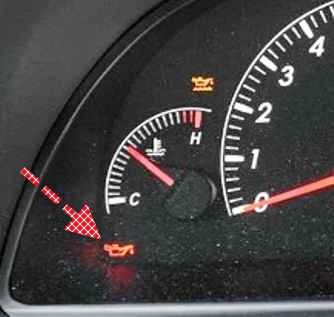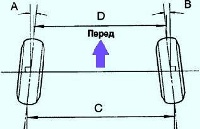During the operation of the car, due to wear or defects, knocks may occur both in the engine, transmission, suspension and steering
Engine knocks
Normally, knocking in the engine is associated with serious malfunctions, which will require disassembly of the engine to fix.
But you can try to determine the cause of the knock in order to decide whether to go to the car service under your own power or in tow
If there is not enough experience, it is better to contact specialists and tow the car to a car service
The noise of the main bearings (heard at the very bottom of the cylinder block) is very dangerous.
You need to stop the engine immediately and go to the garage or service in tow

Often its appearance is accompanied by a drop in oil pressure (the emergency oil pressure drop warning light is on almost constantly)
Conrod bearing knocks (audible in the middle of the cylinder block) - very dangerous.
You need to stop the engine immediately and go to the garage or service in tow.
The sound is rhythmic, sonorous, metallic, of medium tone, increases significantly with increasing load and completely disappears when the spark plug is turned off
The sound of piston pins (heard at the top of the cylinder block) is dangerous: you can drive to the garage or car service yourself.
The knock is rhythmic, high-pitched, with a sharp metallic tinge.
Knocking is heard in all engine operating modes, increases with increasing engine load. Completely disappears when the spark plug is turned off
The sound of worn pistons and cylinders (heard in the same part of the engine as the sound of piston pins) is not dangerous.
Without loading the engine heavily, you can drive to the garage or car service on your own
A sound reminiscent of the clatter of pottery. It is especially well heard on a cold engine, as it warms up it decreases or disappears
Valve noise (heard in the upper part of the engine near the head cover) - harmless.
You can drive to a car service or garage on your own.
Metal clatter against the background of a general muffled noise.
It is well heard at low and medium speeds of the crankshaft from the side of the cylinder head above the valve locations
Knock noise is dangerous, but usually disappears after replacing the knock sensor or refueling with quality fuel
Without loading the engine, you can drive to the garage or car service yourself
Resonant metallic knocks occur, as a rule, when the car accelerates.
The reason is the use of low-octane fuel, engine overload with early upshifts, significant carbon formation in the combustion chambers.
It is necessary to apply a special fuel additive to remove carbon deposits on valves and combustion chambers
Knocking in the transmission
Transmission malfunctions by the noise they make is difficult. It is advisable to contact an experienced specialist
Clutch disengaged noise:
- the clutch release bearing is worn or there is no lubrication in it (for a manual gearbox) - replace the clutch release bearing;
Clutch noise:
- deformation or failure of parts of the driven disk - replace the driven disk
Noise in gearbox:
- - insufficient oil level - check the oil level, top up if necessary;
- - wear or destruction of the bearing or gears - replace damaged parts
Noise when shifting gears:
- - incomplete clutch disengagement - adjust the clutch disengagement actuator (for a manual gearbox);
- - wear of synchronizers - replace worn parts
Knocking at the beginning of the movement of the car:
- - wear of constant velocity joints - replace faulty joints;
- - increased clearance in the main gear engagement - adjust the clearance
Knocking, clicks when the car is moving in a turn:
- wear of the outer constant velocity joint - replace the defective joint
If an extraneous knock appears in the suspension of a moving car, you need to establish the source, regardless of whether it is a constant knock, or appears only when driving through bumps
Failures in the car's suspension can lead to an accident!
Possible causes of knocks in the suspension and their elimination:
Shock absorbers are defective - replace or repair shock absorbers;
The bolts and nuts securing the stabi bar are loose front suspension anti-roll bar - tighten the rod mounts;
Pads and rubber-metal hinges of the boom are worn out - replace worn rubber pads;
Damage, deformation of rubber-metal hinges, upper shock strut bearings - replace the hinges and upper bearings;
Wear of the ball joints of the front suspension arms - replace the ball joints;
Increased clearance in the front wheel hub bearings - replace the bearings;
Great wheel imbalance - balance the wheels;
Distortion of the rim - replace the rim;
Settlement or breakage of the suspension spring - replace the spring;
Wear of rubber-metal joints (silent blocks) of rear suspension arms - replace rubber-metal joints;
Knock from "breakdown" of the suspension due to the destruction of the compression buffers - replace the damaged buffers;
Frequent breakdowns of the rear suspension due to rear axle overload - avoid overloading
Vibration and bumps on the steering wheel
The cause of knocks and vibrations on the steering wheel may be a faulty condition of the ball joints of the steering rods and the steering mechanism, the wheels of the car
Possible causes of vibrations and shocks on the steering wheel and solutions:
Increased play in the front wheel bearings - replace the bearings;
Loosening the tie rod ball pin nuts - tighten the nuts;
Increased clearance in tie rod ball joints - replace tie rod ends;
Increased clearance in the steering gear - repair the steering gear;
Loose steering gear - tighten steering gear
If shock and vibration on the steering wheel appear at the moment you press the brake pedal, the brakes need repair











